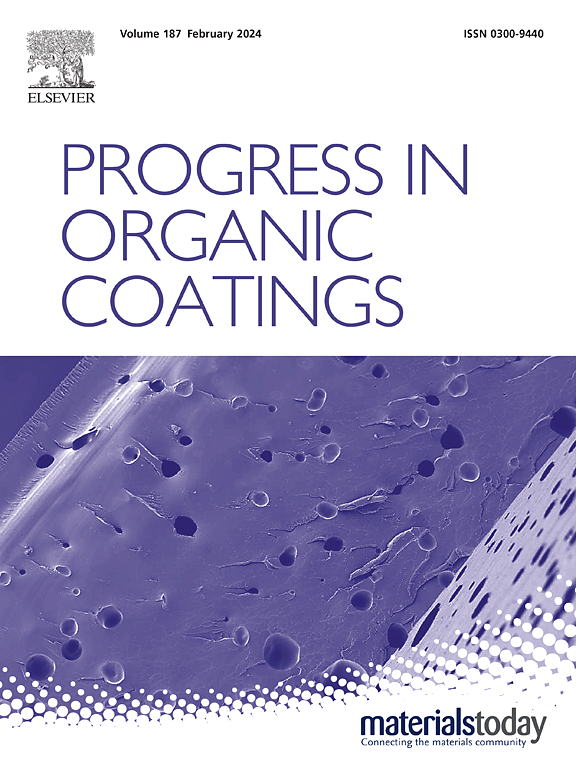Fluorene-vanillin hybrid: A multifunctional fluorophore for latent fingerprint detection and sustainable offset security ink development
IF 7.3
2区 材料科学
Q1 CHEMISTRY, APPLIED
引用次数: 0
Abstract
Fluorophores play a pivotal role in forensic science and anticounterfeit applications due to their unique and distinct emission features, which enable visualization and authentication. In the pursuit for advanced fluorescent pigments, ortho vanillin-fluorene Schiff base (OAF) with bright orange fluorescence was synthesized using a cost-effective, simple, and one-step method. This fluorophore was highly effective in developing latent fingerprints (LFPs), enabling visualization of level 1–3 features on nonporous glass and semi-porous leather under 365 nm UV light. The interaction between glycine in the fingerprint residue on glass substrate and OAF was analyzed through computational studies and further validated using ATR-FTIR analysis. The FESEM images of the latent prints revealed detailed surface morphology and particle distribution on the ridges of the fingermarks. Further, fluorescent images of LFPs were successfully developed on sticky paint, moist glass, multicolored compact disc, and uneven leaf surface, demonstrating the material's versatility on challenging substrates. Moreover, the powder dusting of composite powder of OAF and JUP-AS120, a commercially available pigment enabled enhanced LFP visualization on glass under both 365 and 980 nm light sources for better contrast and minimal background fluorescence, while minimising degradation of fingerprint residues over time. In addition, an OAF spray was formulated using nitrocellulose resin, ethyl acetate and carbitol for broader forensic application, which facilitated LFP visualization down to fine minutiae details on porous, semi-porous and non-porous substrates. Furthermore, to address the growing rates of counterfeited products/banknotes/security documents, an ecofriendly composite security ink was formulated using OAF and JUP-AS120 to obtain offset prints with excellent resistance to photobleaching and scuffing on paper substrate. The ink film exhibited multilevel authentication features: orange fluorescence under a 365 nm light source, and green and red emissions without and with a 610 nm band pass filter, respectively under 980 nm laser source, enhancing security and making forgery more challenging. Additionally, biocompatible OAF can be incorporated in ink pads to offer a dual layer of validation for fingerprints on security documents: optical authentication by leveraging the ink's fluorescence properties and biometric recognition through fingerprint patterns.

芴-香兰素复合物:用于潜在指纹检测和可持续胶印安全油墨开发的多功能荧光团
荧光团在法医学和防伪应用中发挥着关键作用,因为它们具有独特而独特的发射特性,可以实现可视化和身份验证。在追求高级荧光颜料的过程中,采用一种经济、简单、一步法合成了具有亮橙色荧光的邻香草-芴希夫碱(OAF)。该荧光团在显示潜指纹(LFPs)方面非常有效,可以在365 nm紫外光下在无孔玻璃和半孔皮革上显示1-3级特征。通过计算分析玻璃基板指纹残留物中的甘氨酸与OAF的相互作用,并用ATR-FTIR分析进一步验证。潜存指纹的FESEM图像显示了手印脊上的详细表面形态和颗粒分布。此外,lfp的荧光图像在粘性涂料、潮湿玻璃、彩色光盘和不平整的叶片表面上成功开发,证明了该材料在具有挑战性的基材上的多功能性。此外,OAF和jupo - as120(一种市售颜料)复合粉末的粉末喷涂可以在365和980 nm光源下增强玻璃上的LFP可视化,以获得更好的对比度和最小的背景荧光,同时最大限度地减少指纹残留物随时间的降解。此外,使用硝化纤维树脂、乙酸乙酯和羰基醇配制了一种OAF喷雾,用于更广泛的法医应用,这有助于在多孔、半多孔和非多孔基材上可视化LFP的细节。此外,为了解决日益增长的假冒产品/钞票/防伪文件的问题,使用OAF和jupo - as120配制了一种环保的复合防伪油墨,以获得具有优异的耐光漂白和耐磨损的胶印纸基材。该墨膜在365 nm光源下呈现出橙色荧光,在980 nm激光光源下无带通滤光片和带通滤光片分别发出绿色和红色荧光,增强了安全性,使伪造更具挑战性。此外,生物兼容的OAF可以集成到墨垫中,为安全文档上的指纹提供双重验证:利用墨水的荧光特性进行光学认证,通过指纹模式进行生物识别。
本文章由计算机程序翻译,如有差异,请以英文原文为准。
求助全文
约1分钟内获得全文
求助全文
来源期刊

Progress in Organic Coatings
工程技术-材料科学:膜
CiteScore
11.40
自引率
15.20%
发文量
577
审稿时长
48 days
期刊介绍:
The aim of this international journal is to analyse and publicise the progress and current state of knowledge in the field of organic coatings and related materials. The Editors and the Editorial Board members will solicit both review and research papers from academic and industrial scientists who are actively engaged in research and development or, in the case of review papers, have extensive experience in the subject to be reviewed. Unsolicited manuscripts will be accepted if they meet the journal''s requirements. The journal publishes papers dealing with such subjects as:
• Chemical, physical and technological properties of organic coatings and related materials
• Problems and methods of preparation, manufacture and application of these materials
• Performance, testing and analysis.
 求助内容:
求助内容: 应助结果提醒方式:
应助结果提醒方式:


